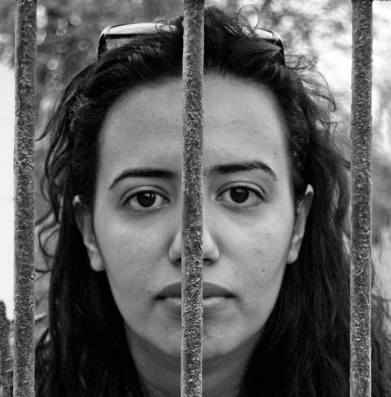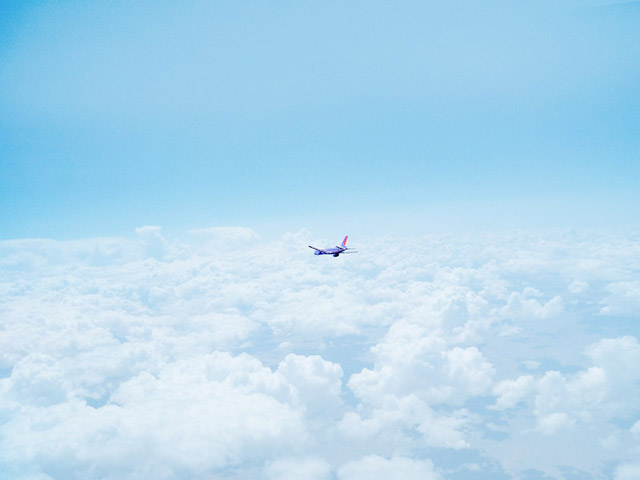At the Japanese American internment camp site, an art exhibit featuring photographs of Muslims has been the subject of complaints.

August 22, 2012
What do portraits of Muslims have to do with the Japanese American internment camps? That’s the question being asked by some about the Heart Mountain Interpretive Learning Center’s current exhibit by Todd Drake, “Esse Quam Videri: Muslim Self-Portraits.” Built on the site of the Heart Mountain internment camp, in Powell, Wyoming, the center is a place to remember and learn about the incarceration of 120,000 people of Japanese descent during World War II.
Stevan Leger, the executive director of the center, said in an interview with The Margins, “Part of our Mission here at the interpretive center is to bring the lessons of history forward to the present day. The exhibit itself attempts to stimulate thinking and conversation around America post-9/11 and how people might be stereotyping people of Muslim faith in the same way that Japanese Americans were stereotyped in 1942.”
The photographs portray subjects—from North Carolina and Bahrain—in their everyday lives: one prays at work in a restaurant, one laughs with her basketball team, and another stands in her store—where her husband was shot—holding a family photo. According to Drake, who is a community-based artist, “the goal of this art project is to draw a richer portrait of the Muslim community, build bridges between Muslims and non-Muslims, and promote civic and cultural integration of Muslims into the wider society.”

This isn’t the first time comparisons have been drawn between the internment of Japanese Americans during WWII and the treatment of Muslims post-9/11. After 9/11, Norman Mineta, then the Secretary of Transportation, was faced with the critical decision of whether or not to create no-fly lists. As a former internee at Heart Mountain, Mineta strongly resisted such lists. At the museum’s inauguration in 2011, he said of 9/11, “There were a lot of people who were saying, ‘Don’t let Middle Easterners or Muslims back on the airplanes.’ And they were even talking about internment and rounding them up.”
Still, the issue is debated, even among those who were interned. George Yoshinaga, another ex-internee at Heart Mountain and a columnist for the Japanese-English language newspaper Rafu Shimpo, wrote in his column on July 31, “As a former resident at Heart Mountain, I am pissed off with an exhibit that has nothing to do with the evacuation of 120,000 Japanese Americans.”
Yoshinaga cited Leslie Maslak, whose Letter to the Editor was published in The Billings Gazette: “Is this a ‘comparison’ to how we mistreat the ‘peace-loving’ Muslims? Whatever the reason, the exhibit does not belong at the Heart Mountain Relocation Camp.”
Like Maslak, others in the Wyoming community have raised concerns about the relevance of the exhibit. Leger told us that some people who have contacted him “see the Muslim exhibit as disrespectful to the site and disrespectful to the Americans who were fighting in Afghanistan. They view the Muslim experience as dangerous to this country.”
This perception of Muslims as “dangerous”—and not as ordinary people—is exactly why we need this exhibit. Chair of the Board of the Heart Mountain Wyoming Foundation Shirley Higuchi’s written response to Yoshinaga’s column speaks to this need: “Perhaps if the country could have seen and understood Japanese Americans as regular folks, and not part of an enemy horde, it would have been slower to accept the mass violation of the civil liberties of an entire racial group.” Higuchi’s words are resonant with the title of the exhibit; “Esse Quam Videri” is North Carolina’s state motto and means “To Be Rather Than to Seem.”
The timing of the exhibit is key. August 11 was the seventieth anniversary of the first arrival of the internees. Past internees, their descendants, and members of the nearby towns of Cody and Powell gathered at the center to remember the camps. In conjunction with the exhibit, the center also showed a video by Ken Watanabe entitled Japanese Americans and Post-9/11 America.
Local newspapers, such as The Billings Gazette, Casper Star Tribune, and The Cody Enterprise, have been overwhelmingly in favor of the exhibit, underscoring a huge shift from the hostility locals showed towards the camps in the 1940s. A poll conducted by The Powell Tribune showed that 59.7% agree with the decision to host the exhibit, while 40.3% are opposed. In an editorial for the same paper, Tessa Schweigert wrote, “Never again should someone be treated with suspicion or hatred because of the color of their skin or the shape of their eyes.”
“That is the over arching lesson Heart Mountain teaches,” Schweigert said. “Never again.”
The exhibit will remain at the Heart Mountain Interpretive Learning Center through September 15.



